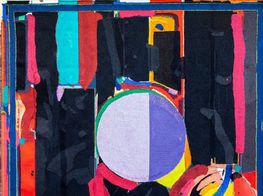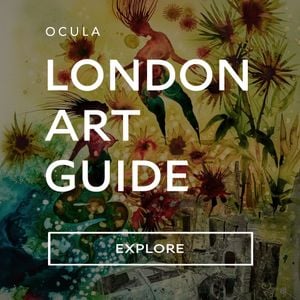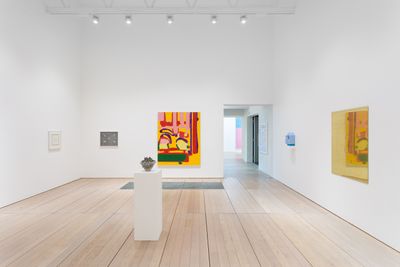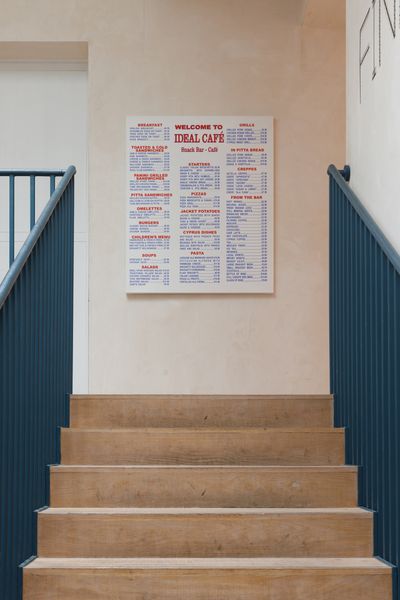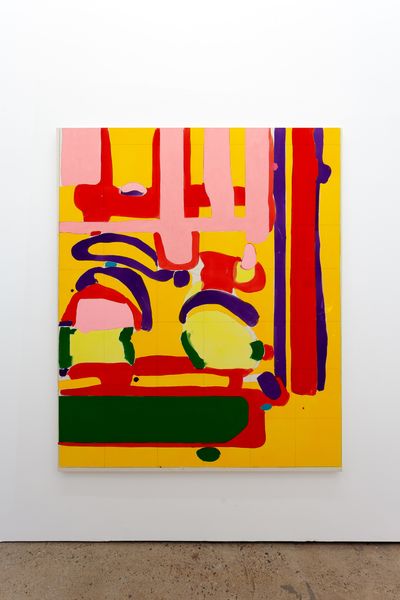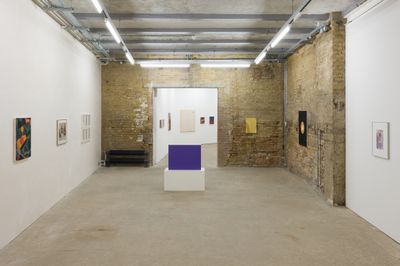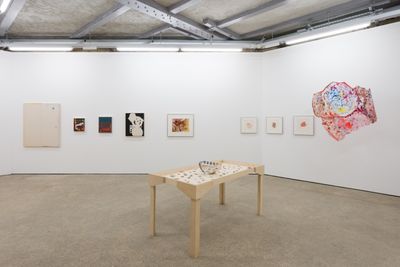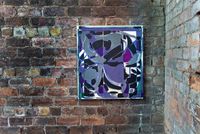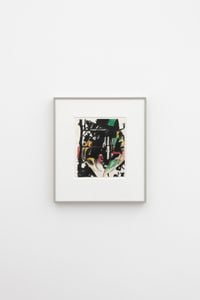Matt Connors Plays a Game of Forms at Goldsmiths CCA
All art might be described as 'sociable', in a reality where the impulse to join dots or detect underlying systems presides. At Goldsmiths Centre for Contemporary Art, Matt Connors' exhibition Finding Aid stages such a reality by presenting more works by other artists than Connors himself, who hovers within a broad constellation of visual affinities.
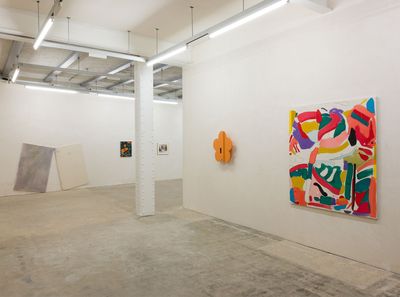
Exhibition view: Matt Connors, Finding Aid, Goldsmiths Centre for Contemporary Art, London (8 March–2 June 2024). Courtesy Goldsmiths CCA. Photo: Rob Harris.
This is a bold curatorial statement given the show is presented as monographic, positing Connors' paintings, drawings, sculptures, and photographs in relation to the works of 21 other artists, all of whom he draws upon. The aim of this, it would seem, is to demonstrate that art that appears to be concerned only with form reaches far beyond itself in myriad relational ways. A 'finding aid' is an organisational tool that contains details about the contents of an archive, aiding an archivist or researcher to swim through vast oceans of information. Likewise, Connors' works perform as a reference point whose meaning is leveraged by what surrounds them.
Connors experiments with abstraction in ways that steer away from individualistic expression, subjectivity, or autonomy—concepts that have tarnished abstract art's reputation as 'self-centred'. In some of his paintings at Goldsmiths CCA, for example JaJanus (2015) and Stripes in Nature (2019), the flat, disembodied application of paint seems to mimic the cursor movements of a computer mouse or tablet—an affinity visible in the sudden, straight lines and awkward twitches, and the white streaks where the blobs don't quite meet. This creates a disjuncture between body and mind, artist and artwork, that gives the works an unruly, unanchored openness, or even a life of their own. As such, in the viewer's imagination, they blend into, and are contaminated by, their immediate environment.
Outside the first gallery is Christodoulos Panayiotou's Ideal café (2023), a giant acrylic-on-canvas facsimile of a restaurant menu (catering to Anglophone tourists), headed with the greeting, 'WELCOME TO IDEAL CAFÉ'. The work sets the tone for what follows, as we enter an alternate or ideal reality given over to image-ideas. Barring the exhibition title, Panayiotou's menu—itself a type of finding aid—is the only linguistic clue in Connors' game of forms.
Most of Connors' own paintings are made up of elemental colour fields that appear rudimentary or in various stages of completion—engendering a mental connect-the-dots with neighbouring works. Stripes in Nature's bright, childlike palette rhymes with the baby blue of Ryan Preciado's Little Oceano 3 (2024), a tiny cabinet containing a relic-like fragment of ceramic; while its layered flatness speaks to the compressed perspective of Mark Armijo McKnight's Echo (2015), a black-and-white, closeup photograph depicting a brick wall dotted with hardened blobs of paint. Equally, the differences between these works point to the potential of Connors' abstraction to contain all manner of visual data.
In the next room, Miyoko Ito's Monongahela (1961) could be Stripes in Nature's closest relative, except its earthy, serpentine contortions draw the body in, its affective intensity momentarily shutting out the show's interconnective premise. Ito's work is placed between Mural for a Gay Household I & II (2018–22), a pair of geometric paintings by Connors, and here the relation is less one of immediate similarity than of the mind's eye inventing a dynamic of gradual contamination. Closer inspection of Connors' composition reveals uneven, spoiled edges, and an incongruous black blob staining the centre of each board. It is as if Ito's corporal entanglement—along with the neighbouring series of four overpainted photographs by Masahisa Fukase from the early 1990s—were somehow dirtying Connors' quasi-architectural plan.
Connors' sculptures share this capacity to feed off and reflect their environment: his minimalist laminate constructions could be distilling all that surrounds them into blocky informational quanta. Large Ingot Index (IV) (2016), for instance, consists of two identically proportioned cuboids standing side-by-side, with planes in green, yellow, and blues. The proximity of the two slabs, which together resemble a stretched-out tuning fork, seems to emit a vibrational frequency that resonates with the rectangular paintings, photographs, and prints on the walls—including those by Connors, Daan van Golden, Robert Cumming, Barbara T. Smith, and Luigi Ghirri.
Connors' reflective brass panels all but make literal this relational dynamic. Etched into Invert (2017) is a rectangle lining the edge like a picture frame, around two horseshoe-shaped curves that face each other on a horizontal axis. Consistent with the work's title, this symmetry suggests reflection of both a literal and metaphoric kind. The room's spacious dimensions make it difficult to make out the works on the opposite wall in the brass. Masaomi Yasunaga's vase-like, barnacled sculpture, Empty Creature (2023) is closer, but its reflection is nonetheless muted and blurred. Surely that is the point: the imperfect mirror assimilates forms into its own pictorial register, while simultaneously deflecting attention.
There are moments in this show when the formalist loop breaks, opening the possibility of the works being in dialogue not only with each other but with the space and its human occupants. More people than artworks can be spotted in the reflective surface of Invert at the time of visiting, for instance. The coloured steel rods that make up Connors's Complaints (2013), leaning eloquently against a reinforced wall, draws attention to the wall's post-industrial aestheticization. It's possible to imagine the galactic configurations in Barbara T. Smith's sequence of xeroxes, Untitled (1965–66), proliferating beyond their frames, on the grubby walls of Goldsmiths CCA's basement galleries.
Finding Aid exemplifies the inherent sociability of art in even the most traditional (and traditionally autonomous) of media. Along these lines, we can think of Connors' alternate reality of images as conversing with our own hyper-networked, hyper-systematised world. The respite he offers is thus less an escape from this world than the possibility of a more playful, interconnected way of living. —[O]

